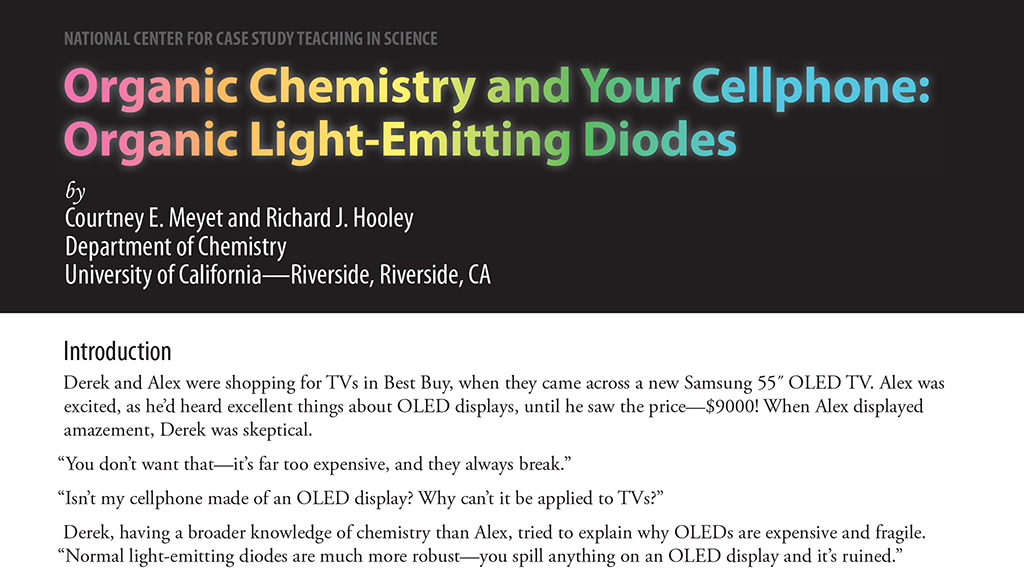Abstract
This case study guides students through a systematic exploration of the synthesis and properties of poly(phenylene vinylene) (PPV), the first conjugated polymer applied as an organic light-emitting diode (OLED). Students determine how to synthesize a conducting polymer from basic organic chemicals, how to vary its structure to alter the color of emitted light (essential for the creation of color displays), and determine how and why it functions. A classic article from Nature is used to introduce students to the synthesis and properties of PPV, while extracts from more popular sources are used to explain the concepts of electroluminescence and the construction of OLEDs. This case study is designed for a second semester/second quarter organic chemistry course, and is generally presented in the middle of the course. Students will need to be familiar with nucleophilic substitution and elimination, conjugation and UV spectroscopy, aromaticity, electrophilic aromatic substitution, and polymers. An optional PowerPoint presentation, available from the Supplementary Materials tab, can be used to provide a framework for running the class activity, which involves answering questions in small groups.


